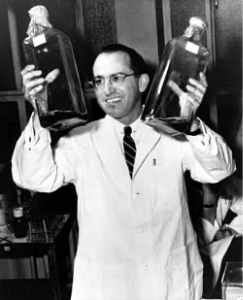
By Bill Clifford — CEO, Spencer Trask & Co.
The collapse of Silicon Valley Bank (SVB) has sent shockwaves throughout the financial world. It is a sobering reminder that even the most well-respected companies can suffer catastrophic losses if they become complacent or fail to adapt to changing circumstances. There are several key lessons that we can learn from this unfortunate event.
. . .
First, it is important to understand that no investment is completely risk-free. While SVB was widely regarded as a stable and trustworthy firm, the reality is that it was exposed to significant market risks. When those risks materialized, the firm was unable to absorb the losses and ultimately collapsed. This serves as a reminder that investors should always carefully consider the risks associated with any investment and diversify their portfolios accordingly.
Next, the collapse of SVB highlights the importance of proper risk management practices. While it is impossible to completely eliminate all risks, firms must take steps to identify and mitigate potential risks. This includes conducting thorough due diligence on investments, monitoring market trends and conditions, and maintaining sufficient reserves to cover potential losses. When firms become over-reliant on a single investment or fail to properly manage risks, they can quickly find themselves in financial trouble.
Thirdly, the collapse of SVB underscores the importance of transparency and accountability in the financial industry. Investors have a right to know how their money is being invested and what risks they are exposed to. Firms must be transparent about their investment strategies and be held accountable for any losses that occur. This includes proper disclosure of all relevant information, as well as taking responsibility for any mistakes or misjudgments that may have led to losses.
Lastly, the SVB collapse highlights the need for greater regulation in the financial industry. While some may argue that excessive regulation can stifle innovation and growth, the reality is that without proper oversight, firms may engage in risky or unethical behavior that can harm investors and destabilize the financial system. Regulators must work to ensure that firms are adhering to proper risk management practices, maintaining adequate reserves, and being transparent about their investment strategies and activities.
. . .
This moment serves as a warning that the financial industry must continue to evolve and adapt to changing circumstances. As technology and markets continue to evolve at a rapid pace, firms must be willing to embrace new strategies and technologies in order to stay competitive and mitigate risks. This includes investing in new technologies such as blockchain and artificial intelligence, as well as adopting new business models that can better navigate the challenges of an increasingly complex and interconnected global economy.
